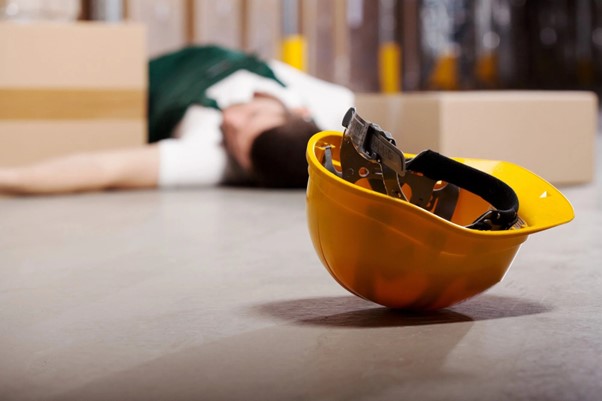Key Takeaways
- Understanding and implementing safety measures can significantly reduce construction accidents.
- Regular training and the use of protective gear are fundamental for worker safety.
- Technology and updated regulations play a crucial role in enhancing construction site safety.
Preventing construction accidents involves implementing key strategies such as regular safety training, thorough hazard assessments, and stringent adherence to safety protocols. It is crucial to supply personal protective equipment (PPE), ensure proper equipment maintenance, and promote a safety-aware culture. Regular inspections and clear communication of safety procedures help minimize risks and provide a safer working environment for all construction personnel.
The Importance of Safety Measures
With construction being one of the most hazardous industries, implementing adequate safety measures is crucial. This is particularly important given that the construction sector consistently reports high rates of workplace injuries and fatalities each year. In the U.S. alone, thousands of workers are injured annually on construction sites, leading to significant financial costs, project delays, and personal tragedies. Companies that recognize the importance of these safety precautions can save many mishaps and eventually save lives. For individuals impacted by such accidents, consulting a Construction Accident Lawyer may also assist them in managing the complexity of occupational injury claims and guarantee that the victims receive just compensation.
Critical Safety Protocols
Employers should enforce basic safety protocols on construction sites to create a safer working environment. The structural integrity of scaffolding and other temporary constructions must be guaranteed first and foremost. These must be regularly inspected and maintained to prevent collapses. Additionally, proper use of heavy machinery is critical. Workers must be trained to handle equipment safely, and machinery should be serviced regularly to avoid malfunctions. Maintaining clear communication among crew members is also vital to prevent accidents caused by misunderstandings or lack of coordination. Following OSHA regulations, which provide comprehensive workplace safety guidelines, is mandatory and beneficial for all stakeholders. Effective safety protocols are the foundation of a safe working environment, protecting employees, reducing downtime, and enhancing overall productivity.
Role of Regular Training
Continuous training programs are essential for maintaining high safety standards on construction sites. These programs are designed to keep workers updated on the latest safety practices and help them recognize potential hazards before they cause harm. One may create thorough training programs using helpful information and training materials on websites such as the CDC’s building safety resources. Regular training ensures that safety knowledge remains fresh and applicable. Also, it promotes a safety-first mentality among employees, increasing the likelihood that they will follow safety procedures and lowering the possibility that they will take needless risks. Businesses may cultivate a culture of safety that is advantageous to all parties involved by making ongoing training investments.
Use of Protective Gear
Proper protective gear can be a lifesaver on construction sites. Hard hats, safety boots, reflective vests, and protective eyewear are non-negotiable, as they provide essential protection against everyday hazards such as falling objects, sharp debris, and machinery-related injuries. Ensuring that all crew members wear these protective items can drastically reduce injury rates and the severity of injuries. Furthermore, specialized tasks may call for extra protective gear, such as respirators, gloves, or ear protection, depending on the nature of the activity. Comprehensive safety protocols should always include the mandatory use of appropriate protective gear. Regular inspections and maintenance of this gear are also crucial to ensure that it provides adequate protection.
Technology in Construction Safety
Technology is revolutionizing construction safety in numerous ways. Drones, for instance, are increasingly used for site inspections, allowing for quick identification and mitigation of potential hazards. Wearable devices that monitor workers’ health and safety in real time are another significant advancement. These wearables can detect fatigue, heat stress, and exposure to hazardous conditions, enabling timely interventions. Automatic machinery shutdowns, triggered by safety breaches or malfunctions, are also becoming more common, preventing accidents before they occur. These technological advancements enhance safety and overall project efficiency by reducing the likelihood of accidents and the associated downtime. Embracing technology is a proactive way for construction companies to avoid safety challenges and protect their workers more effectively.
Adhering to Updated Regulations
Construction regulations are frequently updated to reflect new research, technological advancements, and emerging risks. All stakeholders must stay informed about these updates and ensure compliance to foster a safer working environment. Websites like Construction Safety Specifier provide the industry’s latest updates and best practices. Adherence to updated regulations ensures that safety protocols are based on the most current information available, reducing the risk of accidents. Furthermore, the law frequently requires following rules, which can have serious consequences. Staying current with regulations demonstrates a commitment to safety and can enhance a company’s reputation, attracting skilled workers and clients who prioritize safety.
Conclusion
Ensuring safety on construction sites requires a multifaceted approach that combines training, protective gear, technological advancements, and adherence to regulations. By prioritizing these strategies, the industry can move towards a safer and more efficient future. Safety procedures must be continuously evaluated and improved to reduce risk and protect workers. Ultimately, a commitment to safety benefits everyone involved, from workers and employers to clients and the broader community.














